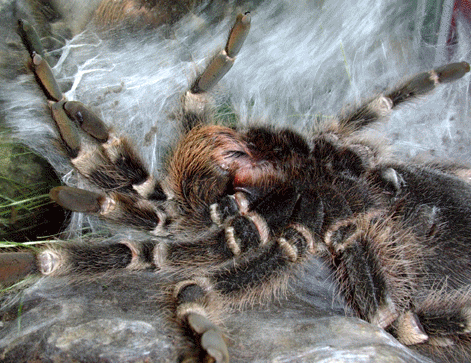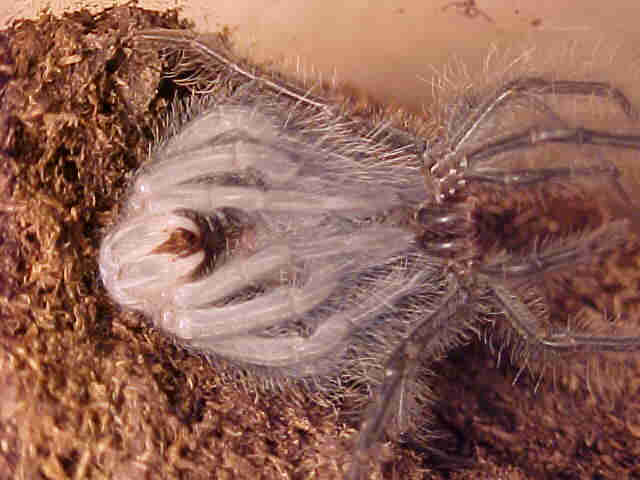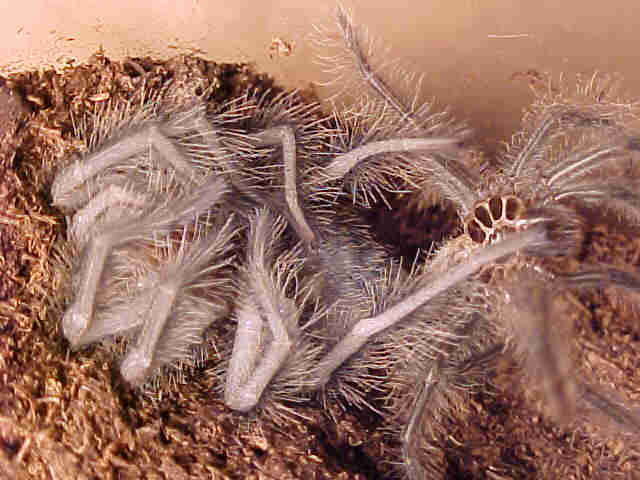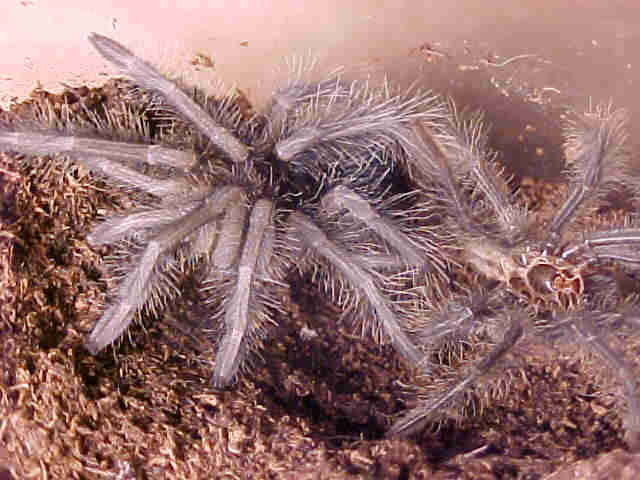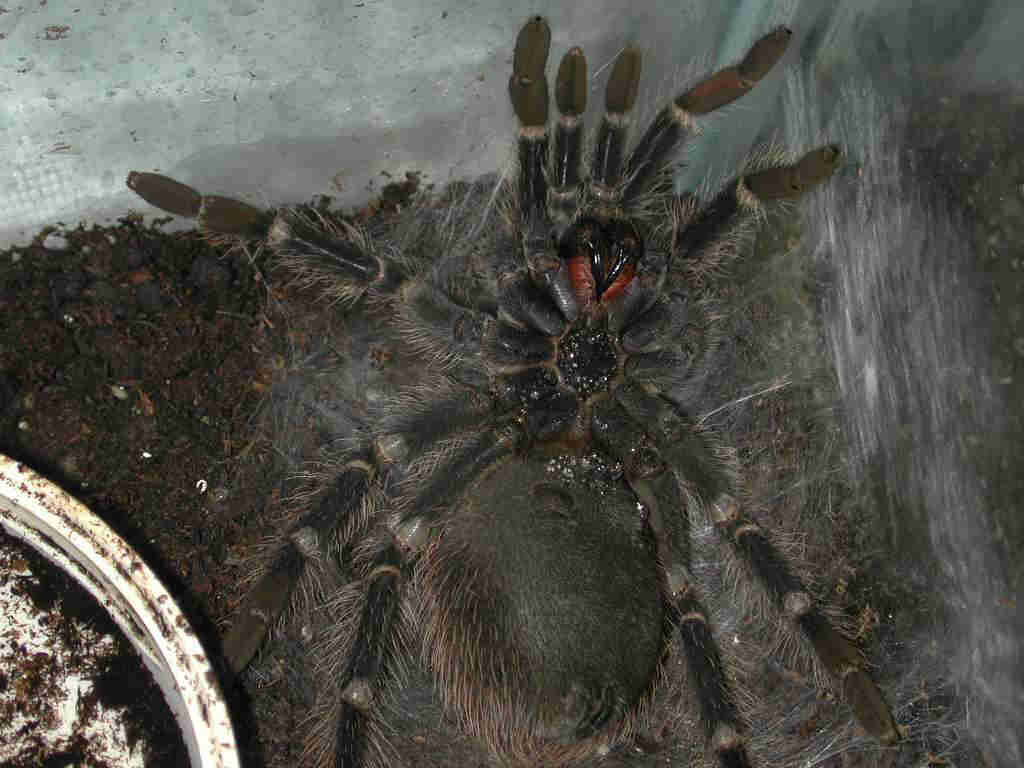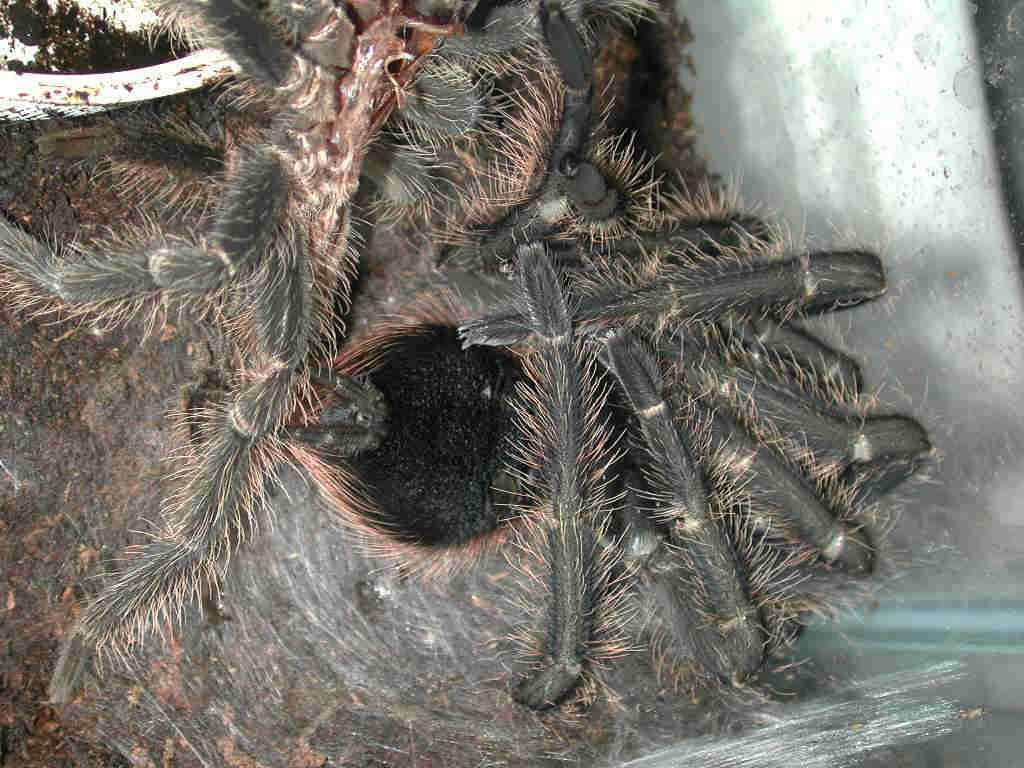 Spider
Moulting
Spider
Moulting
 Spider
Moulting
Spider
Moulting
|
Like other spiders, tarantulas have to shed their exoskeleton periodically in order to grow, a process called moulting. Young tarantulas may do this several times a year as a part of their maturation process, while full grown specimens will only moult once a year or less, or sooner in order to replace lost limbs or lost urticating hairs. If a tarantula previously used it’s urticating hairs, the bald patch will turn from a peach colour to deep blue. An exoskeleton is an external skeleton that supports and protects an animal's body. In popular usage, many of the larger kinds of exoskeletons are known as "shells". Exoskeletons contain rigid and resistant components that fulfil a set of functional roles including protection, excretion, sensing, support, feeding and (for terrestrial organisms) acting as a barrier against desiccation. Exoskeletons have a role in defence from predators, support, and in providing a framework which musculature can attach to. When a tarantula is ready to moult, it will typically spin a silken "moulting mat" and then turn over onto its back. After a period of time, the carapace and abdomen will split open and the tarantula will begin to shed its old exoskeleton. It will flex, rest, and flex again until all of the legs are free of the old exoskeleton. Once the exuviae’s (old exoskeleton) is tossed aside, the tarantula will remain on its back for awhile, resting and regaining its strength. After awhile, it will flip back over and begin several days of stretching out its new exoskeleton. After shedding its fangs will be white and rubbery; the tarantula won't be able to eat until they harden. It will sit there, defenceless, until its new exoskeleton dries. Spiderlings may be sufficiently hardened to consume food within two days, but it may take up to a week or ten days for adults to resume eating. Along with the complete exoskeleton, spiders shed their fangs and chelicerae, their throats and stomach lining, female genital organs, and the linings of the book lungs. It can take anywhere from less than an hour to 12 hours or more for a tarantula to finish moulting. |
Below is an animation and pictures of the moulting process
